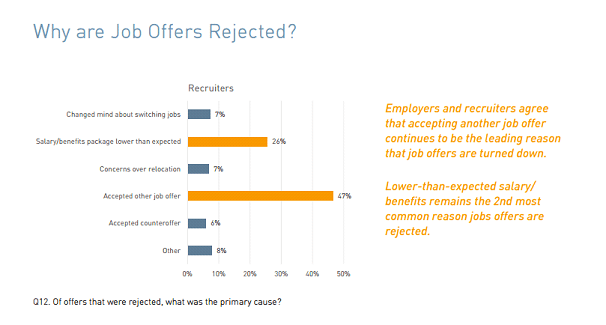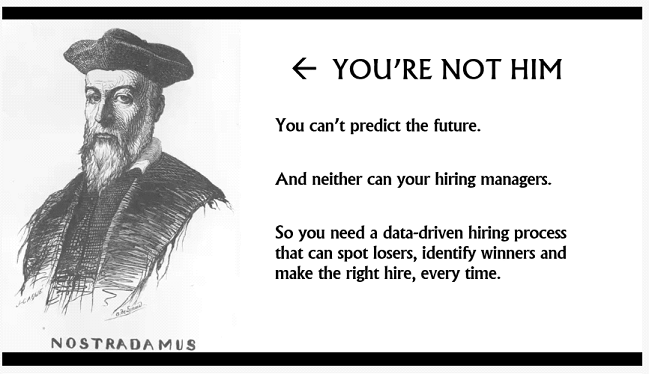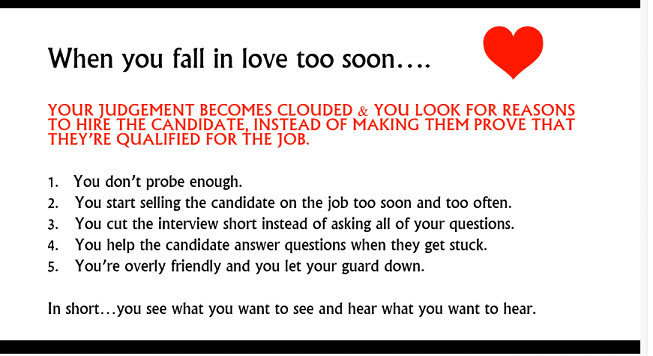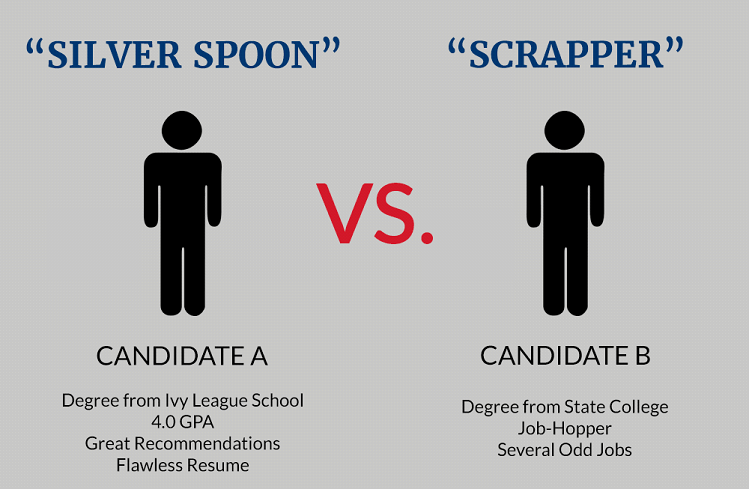
10 biggest mistakes you’re making when hiring in tech

Hiring can be a tall task, but it’s an important one. Why so? Choosing the right people around you impacts your business more heavily than many of the decisions you make because your employees make hundreds of decisions on your behalf every single day.
In his podcast, Michael Hyatt argues: “Team is everything. If you don’t have the right team, then you’re limited by what you can accomplish. If you get the right people in place, you can leverage what you can do and take it to another level.“ Not having the right people around you in the professional environment is “worse than trying to do it alone”.
https://www.youtube.com/watch?v=D1fXJgma-dg&t=
What are the 10 grave sins of hiring tech professionals?
Mistake #1 Lousy job descriptions (or no written job description at all)
Starting the recruitment process is only reasonable when you can articulate what you are looking for in a candidate and write that down. It’s virtually impossible to hire efficiently if you don’t know what you want the person to achieve. Moreover, writing a good job description takes away some of the manual work you have to do otherwise – as Michael Hyatt argues, with the right description, you calibrate candidate’s expectations so people can self-select themselves for the position or out of it.
How do you get started?
According to Hyatt, there are at least 5 sections of a good job description:
- Summary of the job – “the what”, or the essence of the position,
- Purpose – “the big why” of why you’re creating the position in the first place,
- Duties – scope of the job,
- Qualifications – credentials, licenses, specialized training, software requirements,
- Next steps – how to get in touch if you’re interested in the position.
Every word you use matters and that can be overwhelming. Luckily, you’ve got people you can ask for help.
Hyatt advises to write down your job description before asking your team members for input. He believes the way to do it right is to prepare a rough draft of the job description and only ask for feedback once you do so to avoid “creating by committee” because it’s easier and faster for a group of people to edit something than to create it.
Mistake #2: Pretending you understand the technicalities of tech jobs
Recruiters typically hire for a number of positions and nobody expects them to be experts in all of them. However, when it comes to tech jobs, some hiring managers still rely on asking random or superficial questions, including Yes/No questions along the lines of “Are you familiar with X, Y, Z?”. It’s hard to verify the level of expertise of an area you’re not competent to discuss in detail.
Luckily, there’s a solution (which brings us to mistake #3).
Mistake #3: Not testing (or testing too late in the process)
A lot of the problems come from the fact that people don’t test early in the process and waste their valuable time and resources on candidates who are not a match due to lack of skills and expertise.
We tend to believe the best of people, but it should be our goal to evaluate the person’s potential to do well in that particular job based on their skills. It’s only fair these are tested impartially in a way which verifies their knowledge accurately. It’s no rocket science that random questions of people pretending to know the craft don’t serve that purpose.
That’s why skill screening software is not an option but a necessity. Testing coding skills allows you to check the knowledge of technical minutia quickly and without unnecessary effort so you can focus on other attributes the candidate should have which cannot be tested that easily.
Code testing early on also allows you to find A-players at the beginning of the hiring process before someone else snatches them away. Most talented devs don’t sit around and wait for recruiters to come back with an offer – they typically have projects queued up. The longer your process, the less likely they are to be available when you’re ready for them. In fact, according to MRINetwork, accepting another job offer is the #1 reason why job offers are rejected.

Fuente: MRINetwork
If you find a gem, don’t let other people take it away from you because of time it takes you to make a decision. However, don’t think you should make it a priority to hire fast – the more you know about a candidate, the more likely you are to make an informed choice.
When making a final decision, don’t hinge on one report – give yourself the luxury of having numerous sources of knowledge of your candidate as it reduces the risk of mis-hiring.
Mistake #4: Hiring on personal bias & fortune-telling
You can’t just look at someone’s resume and just say “I know they’re the one!” every time you recruit for an open position. Talent acquisition is and should be a data-driven process. Leave fortune-telling to Nostradamus.

Fuente: James Andrew YouTube
Although research shows that first impressions and affinity effect have a massive impact on how we hire, relying solely on your gut feeling does your company disservice.
Be careful not to get overly excited about candidates before you meet them in person. I am not saying you shouldn’t trust people and how they choose to present themselves in CVs, but you should rely on multiple points of contact, multiple encounters, and skill testing software to make a conscious, educated decision.
Here’s what happens when you fall in love with a resume too soon:

Fuente: James Andrew YouTube
Mistake #5 Ignoring Scrappers

Fuente: ihadla.org
In her powerful TED Talk, VP of Human Resources at UPS Regina Hartley presents the terms she and her colleagues came up with to distinguish between two type of job seekers.
In the speech, Hartley presents the audience with two hypothetical candidates who are both equally qualified for the position.
Candidate A – The Silver spoon (life engineered toward success)
Candidate B – The Scrapper (life full of challenges)

Fuente: Serenity Amid Frustration
Hartley acknowledges that the terminology may seem judgemental and politically incorrect at first glance, but she justifies it by saying that every resume tells a life story worth listening to.
Hartley, who is actually a Scrapper herself, believes that you should be more open to inviting Scrappers to interviews because they’ve developed “muscle and grit” following adversities early in life. She believes that “Scrappers are propelled by the belief that the only person you have control over is yourself”. In times of crisis, they tend to look at themselves and think “What can I do to make things better?” instead of finding fault with everyone around them. They also typically don’t give up on themselves that easily, have a sense of humor, and ability to build relationships with people.
Hartley argues that companies who hire Scrappers tend to be more diverse and more productive – in support of her views, she quotes DiversityInc research stating that top 50 companies for diversity outperform the S&P 500 (The Standard & Poor’s 500) by 25%.
Don’t let resumes fool you: underestimated contenders who are fully qualified for the job have plenty of potential despite the fact that their CVs may suggest otherwise at first glance.
Mistake #6 Not hiring for culture
Deciding if someone fits your company culture can be tricky because there is no single test you can use with great accuracy. There are a number of ways to do try and verify cultural fit, i.e. via increasing the number of points of touch and upping the number of encounters to hire through consensus.
Liane Hornsey, former Google VP of Operations argues that you need to hire through consensus – if you don’t, your company culture may become diluted. Hornsey herself had 14 interviews across two continents, but since then Google’s attempted to reduce the number of interviews.
Look for people who are in alignment with what you’re trying to do – Mark Zuckerberg argues that people who believe in what your company does are more likely to be driven to learn than some career programmers.
Michael Hyatt explains seeing the candidate in a social situation, such as work lunch or a dinner with the candidate and their spouse is a valuable source of knowledge because you get to see how the applicant treats their partner, the waiters and other restaurant staff.
Mistake #7 Ignoring the potential of the candidate
Technical adaptability is the quality to be on the lookout for. Individual skills matter, but finding people who can learn quickly which is especially important in “a fast-moving computer science landscape”.
“As is” is important when it comes to coding, but the ability to learn new things quickly is a safe bet in the long run.
Another thing to look for is raw intelligence: Mark Zuckerberg argues that some of the best people he hired “had very little programming experience coming in” but their raw intelligence succeeded that of some career developers who had all the applicable skills. They were also highly motivated to develop the right skills because they believed in the organization.
Mistake #8 No candidate debrief
According to James Andrew, post-interview candidate meetings allow you to “calibrate search and come to a consensus”. As mentioned before, multiple points of touch and multiple encounters are much needed when recruiting to get a 360 view of the candidate. For that reason, it’s important that your talent acquisition team sits down and talks about the candidates post-interview. Candidate debriefs foster hiring through consensus and reduce the impact of personal bias. They are also a sign of respect to the candidate who spent their time coming in and talking to you.
Mistake #9: No clear hiring structure
Lack of pre-defined, documented hiring structure is a surefire way to decrease your hiring efficiency. You can’t expect to hire cream of the crop programmers if your recruitment process is not impeccable.
A documented structure allows you to optimize the process for cost, speed, and Quality of Hire – (read this post to learn how to do it) and gives all candidates a fair chance to prove their potential in the same conditions.
Mistake #10: No follow-up for unsuccessful candidates
Your hiring managers are your storefront because they represent the entire organization. Treat your candidates with respect, and I’m also talking about unsuccessful ones. Update people on the status of their application and let them know once the decision has been made. If people send you “thank you” emails after their interview, always reply and politely thank them back.
“If an organization is together enough to proactively update you on your status and turn you down directly but kindly, keep them on your radar,” says Alexandra Levit. “This is a culture that’s probably pretty desirable.” Levit’s suggestion goes hand in hand with findings of research by Careerism which points out that over 40% of candidates who got no follow-up from a company will not apply again to work for it in the future.
J.T. O’Donnell argues that companies who don’t email unsuccessful candidates hurt their NPS (Net Promoter Score), which is calculated based on the company’s likelihood of getting a recommendation from its customers. Candidate experience has a direct impact on brand reputation and the eagerness to recommend a company to peers – don’t underestimate its power.
Conclusión
Hiring is a long process and there are many traps along the way. However, knowing what you should be careful of minimizes the risk of making a mistake.
Guilty of any of these mistakes? Let me know in the comment section below!




